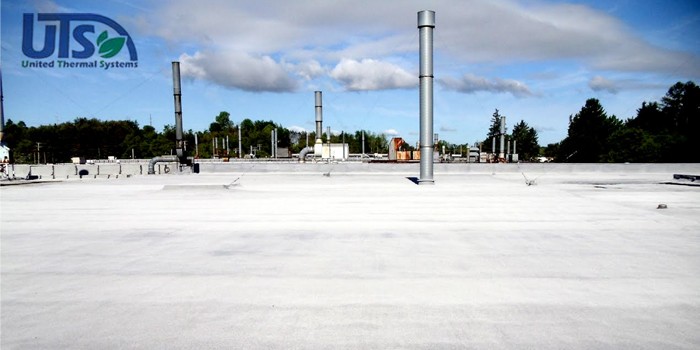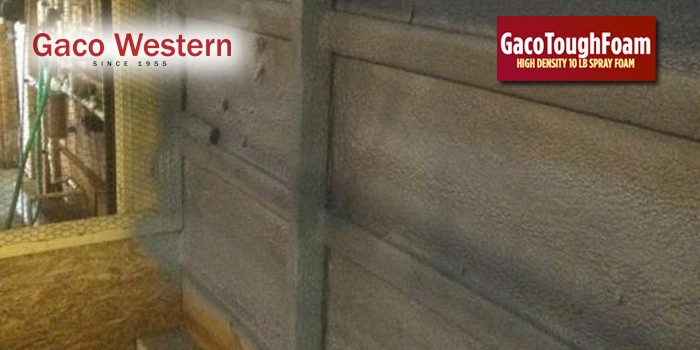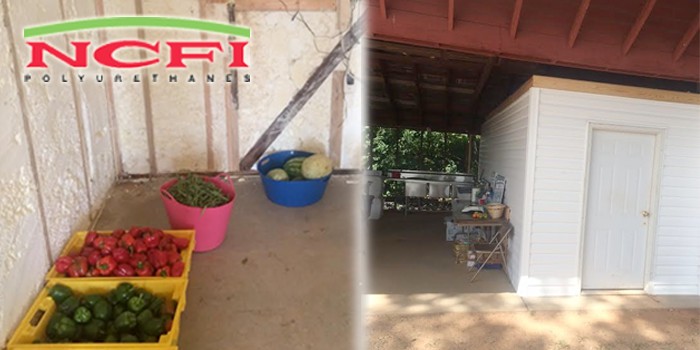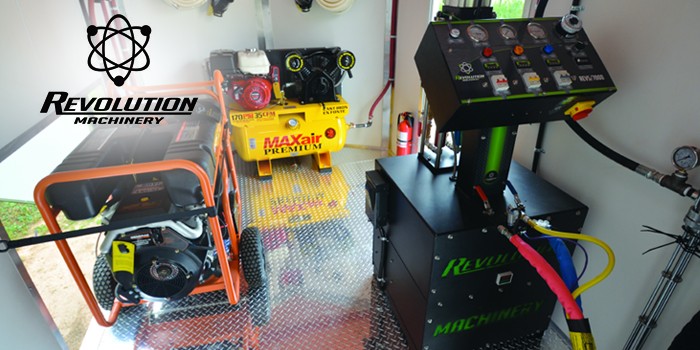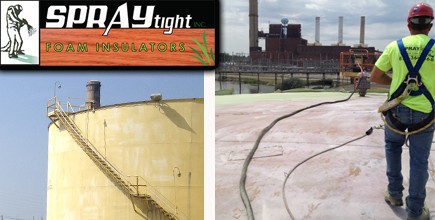
Improperly Insulated Oil Tanks Rehabbed With Spray Polyurethane Foam
BAY CITY, MI – March 8, 2013 – After several years of exposure to the elements, industrial steel oil tanks that are not properly insulated can rust and deteriorate, causing dangerous and costly problems. Consumers Power, a major energy company servicing Michigan, recognized that three of their oil tanks were in dire need of new insulation after an insufficient coating application caused them to rust and deteriorate. The existing insulation and subsequent coating was not applied at the proper thickness. So, the company contacted SPRAYtight, Inc., a contractor with experience insulating tanks who had worked with them before, to re-insulate the tanks and give them new life.
Eric Qualls, owner of SPRAYtight, believes the existing insulation on the 60,000-gallon tanks may have been there for at least 15 years.
“The sun was deteriorating it because the coating mils weren’t there thickness-wise,” he said. “It was given the wrong application, so we had to remove every bit of it.”
Although there was insulation on the sides of the tanks as well, this project only involved removing insulation from the tops. Qualls suggested the company scarify the tanks in an effort to save on costs, but Consumers Power wanted the aging insulation completely removed.
Qualls had anticipated that several crewmembers could access the tank tops at the same time when removing and installing the insulation, but discovered this would not work upon arrival at the site. There were also safety concerns about walking on the structure.
“I expected about six people to work on the tank, but we could only have two people at a time – there was only one tie off point,” said Qualls who was afraid this might slow down the process. “They were also afraid that too much weight could cause the tank to cave in. When you walked on it, you could feel it move.”
Crewmembers found some rusted out areas on the tanks and tore them off. They alerted Consumers Power who sent workers to the site to patch the damaged areas with sheet metal.
Before any application could take place, SPRAYtight needed to protect parts of the tanks from overspray. Crewmembers used paper and tape to cover the edges of the tanks as well as to cover the stairways.

Once the tanks were protected, crewmembers tore off the existing insulation with shovels and scraped it off the deck. They also had to do lead abatement and removed old paint that was on the tanks. To do this, they grinded the material off, using a large vacuum to remove the debris. Then, an abatement primer was applied, which acted as a sealant.
After the existing insulation was removed and the lead abatement was complete, crewmembers applied GacoFlex E-5320 Epoxy Primer to the substrate, which would act as the adhesive in preparation for spray foam application.
Crewmembers then applied a nominal two inches of Gaco Western’s 3 lb. closed-cell RoofFoam 273, starting at the edges of the tank and working their way toward the center. The spray foam thickness varied to three inches because the tanks were tapered at the edges, requiring a thicker application in those areas. The spray foam application was completed in two passes, taking about two hours to complete each tank, according to Qualls.
Once the spray foam was installed, crewmembers applied two 15-mil coats of Gaco Western’s GacoSil S-20 Solventless Silicone Coating, which would protect the spray foam from the sun and the tanks from deterioration.
The crew experienced some off days when they could not work, due to 30-mph winds. On the days that they did work, windscreens were not necessary, according to Qualls.
SPRAYtight employed a lift to reach the top each of the 80-ft. tanks. The workers used one spray foam rig, one coating system rig, and a silicone set-up during the project. The total spray area was approximately 12,000 square feet. It took four crewmembers (two applicators and two ground crew) about a month to complete the project, which was finished in early July of 2012.
SPRAYtight is slated to return to the project site later this year to insulate the sides of the tanks, completing the installation process.
About SPRAYtight, Inc.: SPRAYtight, Inc. is based in Metamora, Michigan and operates across the U.S. and Europe. The company has been spraying polyurethane foam for over 18 years and has applied over a million square feet of foam. Their services include spray foam insulation, spray foam roofing, spray fireproofing, external ductwork, spray elastomeric coating, batt insulation, blown insulation, caulking, and insulation removal. They provide applications for commercial buildings, cold storage buildings, pole barns, new builds, metal buildings, and attics. For more information about SPRAYtight, Inc., please use the contact details and links provided below.


